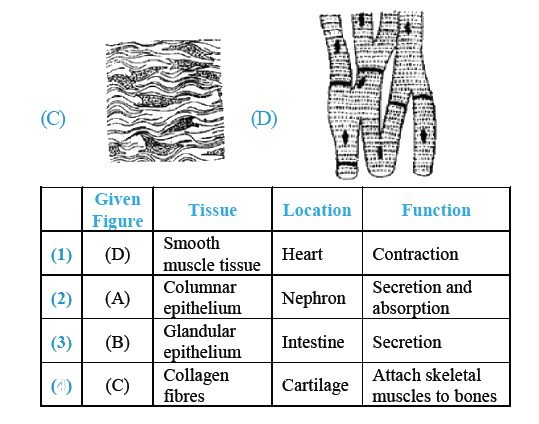Given below is a list of different types of movements in animals.
Running, Jumping, Walking, Slithering, Crawling, Flying, Swimming, Creeping
Write the types of movements seen in Duck.
To determine the types of movements seen in a duck, we can analyze the list provided and identify which movements are applicable to ducks. Here’s a step-by-step solution:
Step 1: Identify the movements listed
The movements mentioned are:
- Running
- Jumping
- Walking
- Slithering
- Crawling
- Flying
- Swimming
- Creeping
Step 2: Analyze the movements of a duck
Ducks are versatile animals that can perform several types of movements. We will evaluate each movement in relation to ducks.
Step 3: Determine applicable movements
1. Swimming: Ducks are known for their ability to swim in water. They use their webbed feet to propel themselves through the water, making swimming a primary movement for ducks.
2. Walking: Ducks can also walk on land. They have legs that allow them to walk around, especially when they are on solid ground.
3. Flying: Ducks are birds and possess the ability to fly. They can take off from the water and fly to different locations.
Step 4: List the movements
Based on the analysis, the types of movements seen in ducks are:
- Swimming
- Walking
- Flying
Final Answer:
The types of movements seen in a duck are:
1. Swimming
2. Walking
3. Flying
---
The movements mentioned are:
- Running
- Jumping
- Walking
- Slithering
- Crawling
- Flying
- Swimming
- Creeping
Ducks are versatile animals that can perform several types of movements. We will evaluate each movement in relation to ducks.
1. Swimming: Ducks are known for their ability to swim in water. They use their webbed feet to propel themselves through the water, making swimming a primary movement for ducks.
2. Walking: Ducks can also walk on land. They have legs that allow them to walk around, especially when they are on solid ground.
Based on the analysis, the types of movements seen in ducks are:
- Swimming
- Walking
- Flying
The types of movements seen in a duck are:
1. Swimming
2. Walking
3. Flying
Topper's Solved these Questions
- BODY MOVEMENT BOOK - NCERT EXEMPLARCHAPTER - BODY MOVEMENT EXERCISE - LONG ANSWER QUESTIONS
10 Videos
- BODY MOVEMENT BOOK - NCERT EXEMPLARCHAPTER - BODY MOVEMENT EXERCISE - VERY SHORT ANSWER QUESTIONS
14 Videos
- CHANGES AROUND US BOOK - NCERT EXEMPLARCHAPTER - CHANGES AROUND US EXERCISE - LONG ANSWER QUESTIONS
10 Videos
Similar Questions
Given below is a list of different types of movements in animals.
Running, Jumping, Walking, Slithering, Crawling, Flying, Swimming, Creeping
Write the types of movements seen in Horse.
View SolutionGiven below is a list of different types of movements in animals.
Running, Jumping, Walking, Slithering, Crawling, Flying, Swimming, Creeping
Write the types of movements seen in each animal.
Fish
View Solution
Knowledge Check
Which of the following are locomotory movements?
a. Walking b. Running c. Climbing d. Flying e. SwimmingAa,b and dBb,c and dCa, b, d and eDa, b, c, d and eThe four sketches (A, B, C and D) given below, represent four different types of animal tissus. Which one of these is correctly identified in the options given, along with its correct location and function
 ATissueLocationFunction(B)Glandular epitheliumIntestineSecretionBTissueLocationFunction(C)Collagen fibresCartilageAttach skeletal muscles to bonesCTissueLocationFunction(D)Smooth muscle tissueHeartHeart contractionDTissueLocationFunction(A)Columnar epitheliumNephronSecretion and absorption
ATissueLocationFunction(B)Glandular epitheliumIntestineSecretionBTissueLocationFunction(C)Collagen fibresCartilageAttach skeletal muscles to bonesCTissueLocationFunction(D)Smooth muscle tissueHeartHeart contractionDTissueLocationFunction(A)Columnar epitheliumNephronSecretion and absorption
Given below is a list of different types of movements in animals.
Running, Jumping, Walking, Slithering, Crawling, Flying, Swimming, Creeping
Write the types of movements seen in each animal.
Kangaroo
View SolutionGiven below is a list of different types of movements in animals.
Running, Jumping, Walking, Slithering, Crawling, Flying, Swimming, Creeping
Write the types of movements seen in each animal.
Cockroach
View SolutionGiven below is a list of different types of movements in animals.
Running, Jumping, Walking, Slithering, Crawling, Flying, Swimming, Creeping
Write the types of movements seen in each animal.
Human beings
View SolutionGiven below is a list of different types of movements in animals.
Running, Jumping, Walking, Slithering, Crawling, Flying, Swimming, Creeping
Write the types of movements seen in each animal.
Snail
View SolutionThe four figures (A, B, C and D) given below represent four different types of animal tissues. Which one of these is correctly identified in the given options along with its correct location and function ?

View SolutionThe four sketches (A, B, C and D) given below, represent four different types of animal tissues. Which one of these is correctly identified in the options given, along with its correct location and function ?


View Solution
